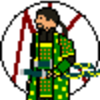Sign In
CloseShortly after the Japanese defeat in World War II, both the nationalist Kuomintang and Communist Party armies began gearing up to restart their civil war in 1946. But as the Soviet Union’s support for the communist forces began to change the tide of the conflict, the Republic of China called out for support, which came in the return of the Flying Tigers. Formed by the original pilots of the American Volunteer Group during the Sino-Japanese War, and bolstered by massive numbers of battle-hardened pilots from across the Pacific, the Tigers’ squadrons dwarfed its pre-war predecessors’ numbers.
Delays in logistics & diplomacy did not bring the Flying Tigers into the war until 1948, unable to prevent the taking of most of northern China, but were able to counter the communist Huaihai Campaign and allowed Kuomintang soldiers to escape & regroup. Afterwards, the Tigers and their Chinese allies began an aggressive campaign to wear down PLA forces and give their own ground armies time to build up a defensive line that finally halted the Communist Party’s southern march. By the initial end of the war in 1950, the final line was drawn between the coastal city of Hangzhou and the border of Tibet, a nation that also retained its independence with the help of the AVG.
The years since the war, the battle lines experienced frequent skirmishes and battles between the two countries, which forged the Republic of China's Air Force into a battle-hardened unit with American-made equipment.
The Douglas A-1 Skyraider has been the RoC's backbone of the Air Force's close air support fleet, and often found themselves deploying their whole squadrons to repel a single massed assault of infantry & armor, making them a favorite for allied troops.
Submission Information
- Views:
- 171
- Comments:
- 0
- Favorites:
- 0
- Rating:
- General
- Category:
- Visual / Digital




